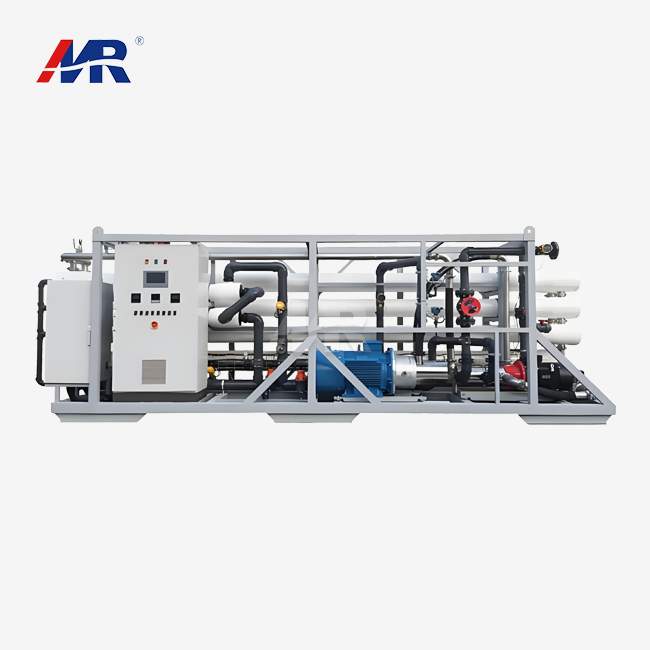Open Intake vs. Subsurface Wells: Which Is Better?
When it comes to seawater intake methods for desalination facilities, two primary options dominate the industry: open intakes and subsurface wells. Each approach has its own set of characteristics that can significantly impact the performance and environmental footprint of a desalination plant.
Open Intake Systems
Open intake systems are the traditional method used in many large-scale desalination operations. They involve directly drawing seawater from the ocean through a pipeline or channel. These systems are known for their:
- High capacity: Capable of supplying large volumes of water for industrial-scale plants
- Versatility: Can be adapted to various coastal environments
- Lower initial costs: Generally less expensive to construct compared to subsurface options
- Marine life impingement and entrainment
- Vulnerability to surface contamination and algal blooms
- Higher pretreatment requirements due to variable water quality
Subsurface Wells
Subsurface wells, including beach wells and seabed filtration systems, offer an alternative approach that leverages natural filtration processes. These systems boast:
- Improved water quality: Natural sand filtration reduces pretreatment needs
- Lower environmental impact: Minimal disturbance to marine ecosystems
- Consistent water temperature: Enhances operational stability
- Limited capacity: Generally suitable for smaller to medium-sized plants
- Site-specific feasibility: Dependent on local geology and hydrogeology
- Higher initial costs: Requires more extensive site investigations and specialized construction
Ultimately, the choice between open intakes and subsurface wells depends on various factors, including plant capacity, local environmental regulations, and site conditions. Many modern seawater desalination systems are exploring hybrid approaches that combine elements of both technologies to optimize performance and minimize ecological impact.
How to Minimize Marine Life Entrainment in Intakes?
Protecting marine ecosystems is a top priority for sustainable desalination practices. Minimizing the entrainment of marine organisms in seawater intakes is crucial for maintaining biodiversity and complying with environmental regulations. Several innovative strategies have emerged to address this challenge:
Velocity Cap Technology
Velocity caps are horizontal structures placed over vertical intake pipes. They create a horizontal flow pattern that fish can more easily detect and avoid. This simple yet effective design can significantly reduce fish entrainment without compromising intake efficiency.
Wedgewire Screens
These cylindrical screens feature narrow slot openings that physically exclude larger organisms while allowing water to pass through. When combined with low intake velocities, wedgewire screens can dramatically reduce both impingement and entrainment of marine life.
Seasonal Intake Management
Understanding local marine life cycles allows operators to adjust intake operations during sensitive periods, such as spawning seasons. This proactive approach can minimize impact on vulnerable life stages of marine organisms.
Artificial Illumination
Some species are naturally photosensitive and can be deterred from intake areas using strategic lighting. However, this method requires careful implementation to avoid unintended consequences on nocturnal marine life.
By incorporating these technologies and strategies, SWRO plant designers can significantly reduce the ecological footprint of seawater intakes. This not only protects marine biodiversity but also enhances the long-term sustainability of desalination operations.
Screen Filters & Strainers: Protecting Downstream Equipment
Once seawater enters the intake system, it undergoes a series of filtration processes to remove suspended solids and protect sensitive downstream equipment. Screen filters and strainers play a critical role in this preliminary treatment stage, safeguarding the heart of the desalination plant – the reverse osmosis membranes.
Automatic Self-Cleaning Screens
These advanced filtration systems use a combination of fine mesh screens and automated cleaning mechanisms to remove particles from the incoming seawater. Key features include:
- Continuous operation: Self-cleaning function minimizes downtime
- Scalable design: Can handle a wide range of flow rates
- Low pressure drop: Maintains system efficiency
Drum Screens
Particularly suitable for high-volume intakes, drum screens rotate to filter debris while allowing water to pass through. They offer:
- Large filtration area: Ideal for handling substantial debris loads
- Robust construction: Withstands harsh marine environments
- Flexibility: Can be customized for various particle size requirements
Multi-Layer Media Filters
These filters use beds of varied granular media to trap particles of different sizes. Benefits include:
- High filtration efficiency: Captures a wide range of particle sizes
- Extended run times: Large dirt-holding capacity
- Backwash capability: Allows for regeneration of filter media
Selecting the appropriate combination of screen filters and strainers is crucial for optimizing the performance and longevity of a seawater desalination system. By effectively removing suspended solids and biological matter, these systems not only protect downstream equipment but also reduce the frequency of membrane cleaning and replacement, ultimately lowering operational costs.
As the demand for freshwater continues to grow globally, the importance of efficient and environmentally responsible seawater intake systems cannot be overstated. By carefully considering the options presented in this equipment comparison, stakeholders can make informed decisions that balance performance, cost-effectiveness, and ecological stewardship in their desalination projects.
Conclusion
The selection of appropriate seawater intake systems is a critical factor in the success of any seawater desalination plant project. From choosing between open intakes and subsurface wells to implementing advanced marine life protection measures and robust filtration technologies, each decision impacts the overall efficiency and sustainability of the seawater desalination plant. As the industry continues to innovate, we can expect even more sophisticated solutions to emerge, further enhancing the role of desalination in addressing global water scarcity.
Are you looking to optimize your seawater intake system or planning a new desalination project? Guangdong Morui Environmental Technology Co., Ltd. is your trusted partner in water treatment solutions. With our extensive experience in industrial wastewater treatment, domestic sewage management, seawater desalination, and drinking water production, we offer comprehensive services tailored to your specific needs.
Our team of expert engineers and technicians is ready to assist you with equipment selection, installation, commissioning, and after-sales support. We pride ourselves on providing cutting-edge technology, including our own membrane production and equipment processing capabilities. As authorized agents for leading brands in water pumps, valves, and instrumentation, we ensure that your project benefits from the best the industry has to offer.
Don't let water scarcity limit your operations. Contact us today at benson@guangdongmorui.com to discuss how our innovative 60m³/hour reverse osmosis seawater desalination plants and customized solutions can meet your water purification needs. Let Guangdong Morui Environmental Technology Co., Ltd. be your partner in creating a sustainable water future.
References
1. Johnson, A. K., & Smith, B. L. (2021). Advancements in Seawater Intake Technologies for Desalination Plants. Journal of Water Resources and Management, 45(3), 287-301.
2. Martinez-Alvarez, V., Martin-Gorriz, B., & Soto-Garcia, M. (2020). Seawater desalination for agriculture: State of the art and future prospects. Desalination, 491, 114559.
3. Pankratz, T. (2019). An overview of seawater intake structures. Desalination and Water Treatment, 127, 105-126.
4. Voutchkov, N. (2018). Energy use for membrane seawater desalination – current status and trends. Desalination, 431, 2-14.
5. Winters, H., & Isquith, I. R. (2019). A critical review of RO membrane fouling and scaling in seawater desalination. Desalination and Water Treatment, 156, 1-20.
6. Zarzo, D., & Prats, D. (2018). Desalination and energy consumption. What can we expect in the near future? Desalination, 427, 1-9.

_1745823981883.webp)


